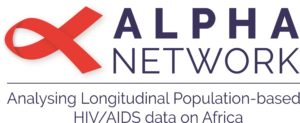April 2011, Mwanza, Tanzania
An examination of the bio-social and behavioural impacts of HIV on fertility will:
- Measure age-specific fertility differences between HIV infected and uninfected women
- Estimate contributions of widowhood and separation as opposed to condom use and contraception to fertility reduction in infected women
- Assess whether knowledge of HIV status (of self and/or partner) and receiving ART treatment are associated with different levels of achieved fertility
- Ascertain the pathways through which knowledge of HIV status translates into different levels of achieved fertility
- Quantify the overall effects of HIV impacts on fertility, birth rate and population growth trajectories in affected populations
- Measure differences in age-specific HIV prevalence between pregnant and non pregnant women, by attendance at ANC clinic and type of HIV service offered (none, VCT only, limited PMTCT, full ART)
- Describe the implications of these differences for epidemic forecasting based on ANC surveillance, and propose new adjustment techniques if biases are detected
Past work compared levels of infection in women in the general population and those attending ANC clinics contributing to national sentinel surveillance [119-128] measuring the fertility-reducing effect of HIV [129-132]; and the contribution of pregnancy to disease progression in infected women [133,134]. Now that surveillance sites include clinics offering services for prevention of mother to child transmission (PMTCT) services, the HIV-related motives of women attending may change [135]. HIV also impacts population growth through births averted due to premature deaths of women in reproductive ages, and fewer births occurring outside of marriage due to reductions in casual partnerships [136-141].
Some study sites will be able to investigate whether ART availability has affected fecundity or changed attitudes to childbearing amongst infected women as postulated earlier in qualitative work [144].
ALPHA member sites are uniquely placed to perform this type of analysis, as their demographic surveillance systems allow them to record all births as they occur, without incurring the selection biases inherent in surveys such as DHS which rely on retrospective reports of past fertility collected from surviving women so birth histories of HIV-infected women are under-represented. Dates of start and end of couple cohabitation episodes allow us to distinguish births and women’s person-years of exposure within marriage and out of union, thus quantifying the effects of widowhood and divorce.
A pooled dataset will allow a quicker accumulation of significant person-years exposure of infected women in the different sub-categories (pregnant / not pregnant; know / don’t know HIV status; treatment naïve / received PMTCT / on ART); and will allow us to see whether trends and differentials are broadly the same in different community settings. Knowledge of fertility differences between infected and uninfected women is needed to interpret HIV surveillance data collected in ANC settings, which continue to be the main source of HIV prevalence trend data available to national AIDS control programmes.
It is not yet known how PMTCT and ART availability at these clinics will affect previously observed differences between community and clinic measures of prevalence. Studies of fertility trends and contraceptive use in infected and uninfected women will show whether increased promotion of family planning in PMTCT clinics is needed as an additional strategy to reduce births of infected children.

